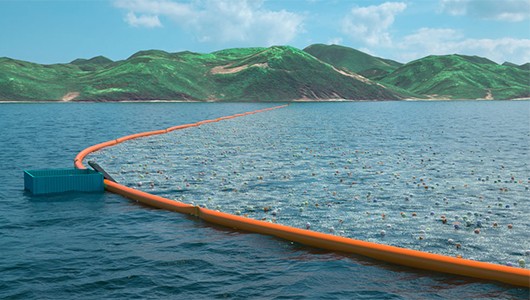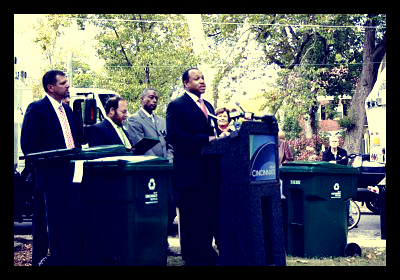Plant With Purpose is a San Diego-based Christian development organization. It assists the impoverished living in rural areas “where poverty and environmental degradation intersect” globally.
Through agricultural training, restoring the land and providing financial education, Plant With Purpose helps poor farming families become self-sufficient. To date, they have helped plant 11.9 million trees since their founding in 1984.
Plant With Purpose is currently present in more than 325 communities, providing aid and support to over 17,132 individuals within Burundi, the Dominican Republic, Haiti, Mexico, Tanzania and Thailand.
Location: Davi, Haiti
The Need: In Haiti, only 2 percent of its original forestry remains. Eighty-four percent of the population lives in poverty, and the country imports 60 percent of its food needs. Half of Haitian children under 5 are undernourished. With the help of Plant With Purpose, smallholder farming families are planting trees, implementing soil conservation methods and preventing soil erosion. Locals are educated on sustainable agriculture methods that restore the land and increase their food production and incomes. Village Savings and Loan Associations are also implemented.
Instead of providing food aid, Plant With Purpose is educating for self-sufficiency.
The communities in Davi are facing particular hardships. Floods and landslides cause destruction every rainy season, washing away the fertile topsoil and preventing farmers from growing crops. Families are forced to migrate to cities to find work. Plant With Purpose is working to reverse deforestation through its various methodologies.
Progress: Assisted families showed a 46 percent decrease in cholera and a 50 percent decrease in typhoid, compared with others. They also now actively save cash four times more frequently. They cultivate about 20 percent more land, own 30 percent more land and protect 20 percent more land through reforestation or erosion control.
These families also plant about three times as many trees as non-assisted local families.
Location: Panasawan & Pang Dang Nok, Thailand
The Need: The government of Thailand refuses to recognize many hill tribe members as citizens. Thus, they have few legal rights. They also have limited access to healthy fields, leaving them to grow crops on devastated hillsides. Plant With Purpose has been working with these communities to help them learn sustainable farming techniques and advocate for legal status in Thailand.
The village of Panasawan suffers from extreme poverty and a destroyed environment. Soil erosion, poor water quality and sanitation, difficult access to land rights and lacking availability of credit has ensnared the community in the cycle of poverty and environmental degradation. Plant With Purpose is providing farmers with environmental and financial training and economic opportunities necessary to break the cycle.
Progress: Hill tribe farming families are gaining access to land and basic rights. Village Savings and Loan Associations are providing a means to save and gain credit. Plant With Purpose is also helping congregations better meet the needs of their communities by training leaders.
Families aided now have twice as many children enrolled in high school, are 31 percent more likely to actively save cash, are 41 percent more likely to own land that is protected, have planted 2.5 times more trees, have shown a 19 percent decrease in admitted gambling and are 20 percent more likely to eat meat, eggs or fish on a daily or weekly basis.
Location: Lyasongoro, Tanzania
The Need: In Tanzania, Plant With Purpose mainly works with women, many of whom are widows or single mothers, because women and children there represent the poorest segment of the communities. Roughly 98 percent of these women who work earn through agriculture, but because they don’t have access to the same training their male counterparts receive, their yields suffer.
Plant With Purpose provides agricultural training, which doubles crop output, and plants over a million trees each year around Mt. Kilimanjaro. They are also establishing Village Savings and Loan Associations.
Progress: Assisted families showed a 65 percent decrease in diarrheal disease and a 70 percent decrease in typhoid incidence. It’s also true that 99 percent of these families actively save cash, compared with 48 percent previously, and 50 percent have enough savings to cover household expenses for six months, compared with 6 percent previously.
Of participant families, 80 percent own cattle, which is 42 percent higher than those not assisted, and 66 percent of participants earn some household income through microenterprise endeavors, a significant 43 percent higher than those who were not trained.
Location: El Café, Dominican Republic
The Need: While the Dominican Republic is gaining wealth, there is a growing gap between the rich and poor. The most impoverished, deforested regions exist near the border of the Dominican Republic and Haiti.
The Dominican government relies on Plant With Purpose to help with their reforestation programs.
El Café mainly profits off of its oregano crop, but recent deforestation threatens this trade. Plant With Purpose is helping to replenish the soil and diversify their economy. The organization has started a nursery, growing seedlings, fruit trees and other plants to replenish the forests and provide an additional source of income. Plant With Purpose has also provided a solar drier to villagers to convert their oregano into a marketable good. They are also offering workshops teaching sustainable farming and land conservation methods.
Progress: Families who work with the organization own twice as much land and protect 75 percent more land than non-participant families. These households are 60 percent more likely to own cattle as well.
Cacao, a valuable cash crop, is harvested 30 percent more often by Plant With Purpose farmers than other locals. Assisted families have planted almost three times as many trees than before.
Location: Kiremba, Burundi
The Need: In the world’s hungriest country, 80 percent of Burundi’s 8.5 million people live below the poverty line. At least 90 percent of Burundians depend on agriculture, but their farmland has been devastated by deforestation, drought, war and over-farming. Plant With Purpose is helping these farmers access land and maximize their productivity. They are also working with agriculture research institutions to provide disease-resistant crops. Through the introduced Village Savings and Loan Associations, villagers are saving their money and providing loans to others.
Progress: Plant With Purpose reports that 95 percent of farmers in associations have shared their knowledge with other farmers; each farmer shares with an average of 23.5 people. Participants are 24 percent more likely to save cash than non-participants, have planted three times as many trees as non-participants and have harvested 31 different crops, compared with 20 crops harvested by non-participant farmers.
Location: Tamazola, Mexico
The Need: In Oaxaca and Chiapas, two of the poorest states in Mexico, more than 75 percent of indigenous people live in extreme poverty. As men migrate to find work elsewhere, women are frequently left to care for their children and households.
Plant With Purpose is teaching families in rural communities to plant vegetable gardens that will increase their food production and incomes. Village Savings and Loan Associations have also been established to provide financial security and opportunity.
Progress: Plant With Purpose reports that participant households actively save cash 68 percent of the time, while non-participants save cash only 45 percent of the time, with participants being 43 percent more likely to have enough savings to cover six months of needs. Seventy-seven percent of participants own cattle, compared with 51 percent of non-participants, with the number of cattle owned by participants being twice that of the number owned by non-participants. Only seven percent of participant households have dirt floors in their homes compared with 29 percent of non-participant households. Participant farmers harvested 22 different crops, compared with eight by non-participants.
Plant With Purpose has seen measurable success from its efforts, objectively putting donations to good use. If seeking an effective, Christian-based charity that assists the poor on the ground, look no further. Personal contributions can be guaranteed to yield maximal benefit in the hands of this organization.
– Elias Goodman
Sources: Charity Navigator, Plan with Purpose, Scribd
Photo: New Identity Magazine






 Some people claim that we are living in revolutionary times. With terms like Arab Spring and Occupy Wall Street becoming part of our everyday lexicon, it’s hard to argue otherwise. But one revolution occurring outside the lens of the mainstream media involves young, tech-savvy entrepreneurs applying creative
Some people claim that we are living in revolutionary times. With terms like Arab Spring and Occupy Wall Street becoming part of our everyday lexicon, it’s hard to argue otherwise. But one revolution occurring outside the lens of the mainstream media involves young, tech-savvy entrepreneurs applying creative 